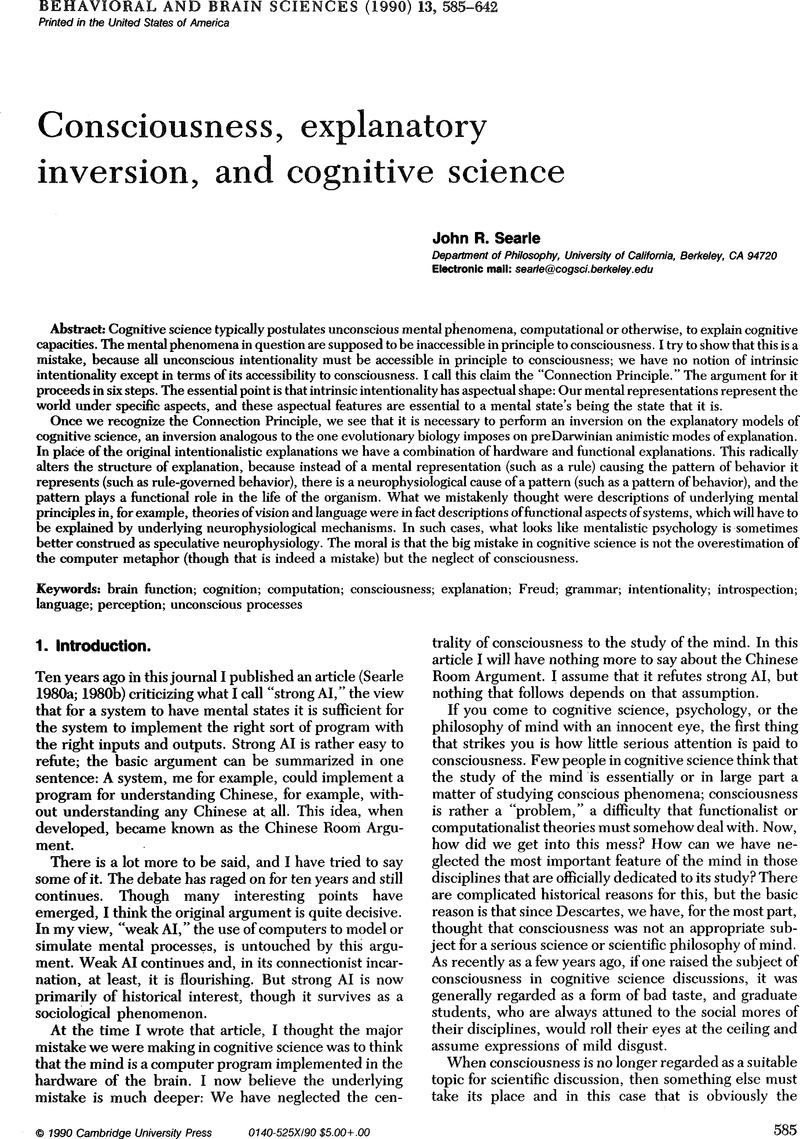Crossref Citations
This article has been cited by the following publications. This list is generated based on data provided by Crossref.
Goel, Vinod
1993.
Comments on the Connection Principle.
Behavioral and Brain Sciences,
Vol. 16,
Issue. 1,
p.
189.
Shanon, Benny
1993.
What next? Ramifications for empirical psychology.
Behavioral and Brain Sciences,
Vol. 16,
Issue. 1,
p.
197.
Searle, John R.
1993.
Consciousness, attention and the Connection Principle.
Behavioral and Brain Sciences,
Vol. 16,
Issue. 1,
p.
198.
Pfeifer, Karl
1993.
Causal dispositions, aspectual shape and intentionality.
Behavioral and Brain Sciences,
Vol. 16,
Issue. 1,
p.
196.
Julesz, Bela
1993.
Consciousness and focal attention: Answer to John Searle.
Behavioral and Brain Sciences,
Vol. 16,
Issue. 1,
p.
191.
Searle, John R.
1993.
Consciousness, explanatory inversion and cognitive science.
Behavioral and Brain Sciences,
Vol. 16,
Issue. 1,
p.
189.
Ludwig, Kirk
1993.
A dilemma for Searle's argument for the Connection Principle.
Behavioral and Brain Sciences,
Vol. 16,
Issue. 1,
p.
194.
Schröder, Jürgen
1995.
Token-identity, consciousness, and the connection principle.
Behavioral and Brain Sciences,
Vol. 18,
Issue. 3,
p.
615.
Kurthen, Martin
and
Linke, Detlef B.
1995.
The ontology of aspectual shape.
Behavioral and Brain Sciences,
Vol. 18,
Issue. 3,
p.
612.
Nelkin, Norton
1995.
Searle's argument that intentional states are conscious states.
Behavioral and Brain Sciences,
Vol. 18,
Issue. 3,
p.
614.
Shani, Itay
2010.
Representation and aspectual shape.
New Ideas in Psychology,
Vol. 28,
Issue. 3,
p.
324.
Di Francesco, Michele
Marraffa, Massimo
and
Paternoster, Alfredo
2016.
The Self and its Defenses.
p.
9.
Pereplyotchik, David
2017.
Psychosyntax.
Vol. 129,
Issue. ,
p.
153.



